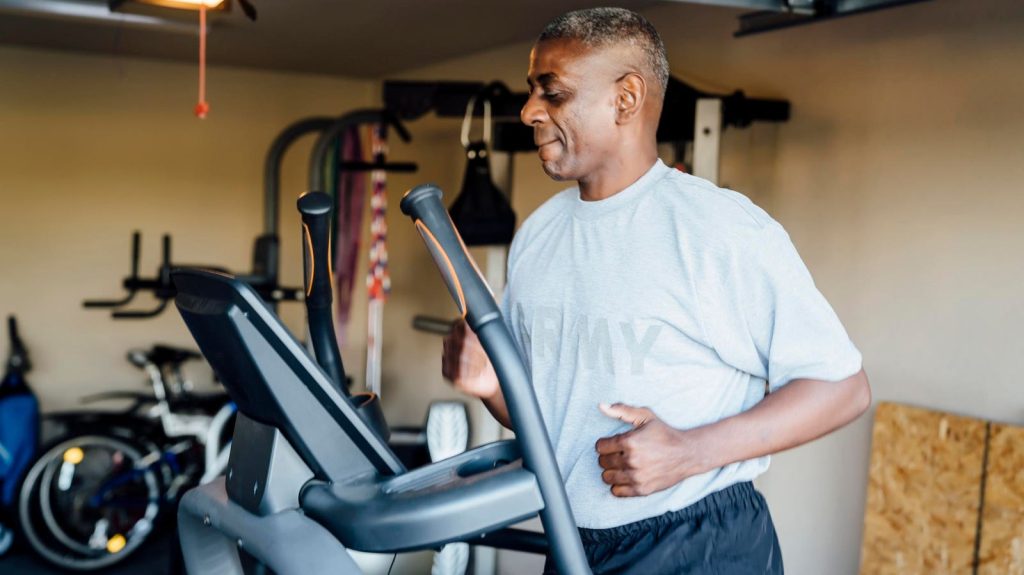By Adam Grant, CEO of Campus Commandos, a top youth marketing agency for marketing products/services to college students, and home gym hobbyist.
The Covid-19 pandemic had a nuclear impact on businesses. Popular conferences like CES and SXSW went completely online. Many companies have had to adapt quickly to the changing environment, implement new strategies and navigate unprecedented challenges.
It’s now 2023, and in-person conferences are coming back. This gives everyone a chance to see how businesses have adjusted during the pandemic. It allows them to have conversations in person again. And it gives you examples of the popular phrase “when the going gets tough, the tough get going” in action.
Zigging When Others Zag
An example in my own world of marketing and advertising is that instead of focusing our efforts mainly online, which is an answer many event-based businesses thought of at the time, we put interactive vending machines on college campuses. This allowed companies to still be able to conduct sampling, a capability that has been around for some time, as manufacturers were aware that providing consumers with free samples could actually help grow their businesses. The mainstream idea of hand-to-hand sampling during Covid-19 came with too much risk and uncertainty.
As a business owner, I also look for ideas on how other business categories have managed their pandemic time. This was my main agenda item as conference attendance has improved from pandemic-level ghost towns. One such conference was a home gym con in French Lick, Indiana. It was the perfect opportunity to learn from a different business category and perhaps apply some learnings to my own life and business.
The pandemic took the home exercise equipment industry by storm. The closures of health clubs and stay-at-home orders changed the landscape of people’s lives, including how and where they exercised. In states where stay-at-home orders were the most strict, people had no other option but to bring their workouts home, which caused a demand for exercise equipment for homes, garages, basements, condos and apartments.
Innovation
MX Fitness Supply makes rapid-change adjustable barbell and curl bar systems that have low to high weight adjustments in a single compact footprint. They took what you normally see in a health club—a rack of 20- to 100-pound fixed barbells—and turned it into a compact product.
There are very few weight bar manufacturers in the USA, so when consumers were not able to get into the gym or had trouble buying products from overseas, they relied heavily on U.S. manufacturers like Solid Bar Fitness, the manufacturer of the Marrs-Bar. That bar and other versatile equipment were useful during Covid-19 due to a consolidated design for multiple exercises, like squats, good mornings and front squats.
Rep Fitness also launched more showrooms in the USA in 2022—specifically in California and Pennsylvania—for customers to test equipment.
I noticed a pattern of innovation where companies were designing single pieces of workout equipment to do multiple things so home gym users could take advantage of a health-club-style gym. It reminded me of the importance of letting the smaller business or user take advantage of what is available at a large gym or larger business. What can you as a business owner launch in a more compact, any-user format?
How Others Zagged
The pandemic caused an explosion in the home gym market. Companies and creators like ExecutiveFit LLC and Kaizen DIY Gym have created products and content that are optimized for the home gym environment. ExecutiveFit made a modular deadlift platform. Products like these are there when you need them and out of the way when you don’t. Even social media pages like KaizenDIY shared tips and tricks on DIY gym equipment when equipment was harder to get. As more people looked for ways to work out at home, the garage became a natural spot to transform into a gym space. But for many people, the garage serves other purposes (such as storage and car parking) and isn’t the most convenient place for gym equipment. Many people have space in their backyards—a spot many of us would like to spend more time in—but most fitness equipment isn’t purpose-built for the outdoors. SwingSesh is an example of a company that tapped into this market by creating combination backyard fitness and play equipment that is designed specifically for outdoor use.
Adapting to changes can be difficult for any business, but the impacts the Covid-19 pandemic had on daily life now have us hyper-aware of how rapidly businesses must be prepared to adapt. It’s increasingly important to have a creative team that can think through both customers’ current needs and how consumers’ behaviors may be primed for change based on new or evolving environments. Working from home is a norm that is likely here to stay. While WFH certainly has benefits, including more time with family, it also means there have never been more distractions for mom and dad at home. For active parents, this translates to a need for better time management, which created an opportunity for companies to design products that help parents stay active while staying engaged with their kids. Increased distractions also mean more products could benefit from dual functions. Look for ways to provide quality products that can serve more than one short-lived purpose, particularly in the health and fitness space.
The USA is an entrepreneurial country, and this was evident to me as I learned about how businesses like these adapted during the pandemic. The Covid-19 pandemic has been a challenging experience for businesses around the world. However, it has also provided valuable lessons and opportunities for growth and innovation.
Read the full article here










